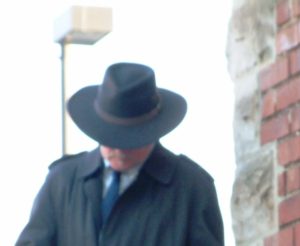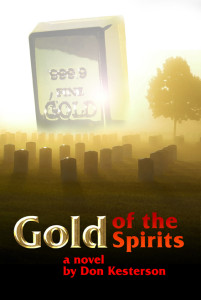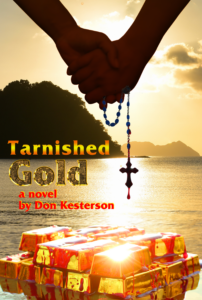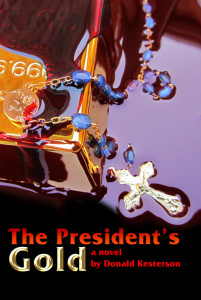Just got finished watching the History’s Channel’s, History’s Greatest Mysteries – Lost Gold of World War II and wanted to offer a critique of the documentary that I finally got around to watching. This was an excellent documentary regarding the gold the Japanese buried in the Philippines during World War II. Their experts were outstanding, extremely knowledgeable and highly qualified. For the record, I was initially contacted to be on the documentary but didn’t make the final cut. Yes, I was bummed but such is life. But since I have considerable knowledge on the subject I had more than a passing interest to watch.
Popcorn and adult beverage in hand I sat down in front of the TV.
Below are my points of research contrary to those presented in the documentary. Mind you not sour grapes, just a difference between our research and knowledge plus the presentation.
One of the premises of the documentary was Yamashita Tomoyuki knew of all the burial sites and was hung because he had refused to cooperate and give up the information to his interrogators.
I want to set forth the details of Yamashita’s final days in the Philippines.
Now it is true that Yamashita was at the last burial site because he had strict orders to make sure none of the local engineers, soldiers and slaves, responsible for carrying the final gold and treasure into this site would talk. He got everyone into the cave under the story of a great celebration or “party”. Once they were all drunk, Yamashita snuck out and had the site entrance blown up then sealed to keep the surface location a secret. Additionally, he may have been to or know of a couple of others sites the Golden Lily had just enclosed.
According to my research, during the final days of World War II, Yamashita was focused on guerilla warfare to hold MacArthur off long enough for the Golden Lily team to finish those last burial sites. His orders were to prolong the fighting as long as possible with MacArthur to give the Golden Lily team time to bury as much of the gold as possible.
Further, the documentary put forth the theory that Yamashita was interrogated to give up the location of the gold burial sites and when he didn’t “crack” from the interrogation, they moved on to interrogate his driver, Major Kashii Kojima. Soon Kojima caved under the interrogation techniques used by Edward Lansdale and Servino Santa Romana. Kojima later profited from “caving”.
The theory in this documentary was because Yamashita knew of the burial sites, he had to be silenced. The truth; Yamashita was hung because he embarrassed MacArthur by prolonging the guerilla warfare for several days after Hirohito agreed to surrender.
One of the experts on the documentary hypothesized that Marcos didn’t know about the buried gold until Rogelio Roxas made his discovery of the golden buddha. This is factually incorrect. As early as the 1950’s Marcos was aware of the buried gold and started seeking and profiting off from the Golden Lily burial sites, long before Roxas’s discovery. More detail is provided in my novel, Gold of the Spirits.
Understand Roxas had been an amateur treasure hunter for a long time. Now here is the accurate detail Roxas’s operation after his discovery of the Golden Buddha. He decided to sell the buddha to finance his operation at that site. When Marcos heard about his discovery, he sent in someone, who was disguised as a legitimate buyer, to evaluate the buddha. Within days, Marcos sent in his personal police force, under the command of Marco’s top henchman, Fabian Ver. They beat Roxas, plus confiscated the Golden Buddha. When Roxas went public with his story, President Ferdinand Marcos had Roxas arrested and brutalized by Ver. Many of the Filipinos were already starting to turn against Marcos. During Roxas effort to recover the Golden Buddha, Marcos would have him arrested. As for Roxas, spent the next several years in and out of jail, where each time he was beaten and brutalized by Ver. Each time, when it looked like he could die from the beatings, Marcos had him released from jail.
Finally, the situation got so bad for Marcos in the Philippines, President Reagan offered Marcos to exile in Hawaii. This gave Roxas his opening to pursue regaining the Golden Buddha. He had a friend in Georgia set up the Golden Buddha Corporation, a Georgia corporation, and filed a suit against Marcos now residing in Hawaii. When it was time for Roxas to testify in court, a doctor prescribed him some medicine. He mysteriously died the day before he was to board the plane and fly to Honolulu. His lawyer in California, asked his wife to put the medicine in a FEDEX package and overnight it to him. When the package arrived, the FEDEX envelope was empty. Roxas’ death didn’t let the Marcos family off the hook on the lawsuit as it was filed by the Golden Buddha Corporation. The court ruled in Golden Buddha Corporation’s favor and at the time was the largest settlement recorded. However, it remains tied up in appeals. More detail is provided in my novels, The President’s Gold and Tarnished Gold.
One of the expert witnesses claimed that the Roxas site is the only recovery of gold and treasure documented. Sorry not even close. This is not even true as far as the public record. The documentary did mention that Lansdale had informed President Truman of Yamashita’s driver, Major Kashii Kijomi detailing several key finds. Truman decided to keep it “hush – hush” thus the CIA begin recovering treasure that has been discovered led by Lansdale/Santa Romana in the late 1940’s and early 1950’s.
Over time, from my research, it has been estimated that of the one hundred-seventy-five burial sites, more than thirty sites have been recovered. Marcos was involved in the very beginning of the hunt for the burial sites.
Let me provide some additional background on Ferdinand Marcos pursuit of buried treasure.
Marcos was the lawyer in the Philippines representing Servino Santa Romana. So he had access to much of Santa Romana’s bank accounts and information regarding his finds.
Additionally, Marcos became friends with Japanese-American business man, Fukimatsu Minoru, together these two men began working together to recover gold the Japanese buried in the Philippines. By September 9, 1956, Congressman Ferdinand Marcos had a Gold certificate for the “deposit” amount of 7,120 metric tonnes of AU issued by Swiss Bank Corporation (Schweizerische Bank Gesellschaft M.H.C.).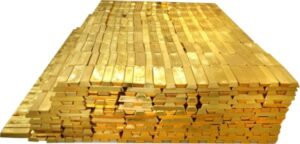
In the early 1950’s, Ryoichi Sasakawa, a former member of the Golden Lily, became president of the New Japan-Philippine Association and a Japan-Indonesia Association. Soon thereafter, Ryoichi made the acquaintance of Ferdinand Marcos with whom he would become friends. It is likely that Marcos and Ryoichi first meeting went back to the end of the Quirino Presidency, when the Philippines Government was attempting to uncover buried treasure.
Lastly, and of equal or greater importance, sometime during the mid-1950’s, Yoshio Kodama came to the Philippines “to work on Japanese construction projects” and “off-shore salvage operations”. Yoshio had considerable power in Japan, one he was part of the Golden Lily team, one of the founding members of the Liberal Democratic Party, and soon would become the boss of the Yamaguchi-Gumi, the largest Yakuza clan in Japan. This allowed him to move back and forth between the Philippines and Japan, work with his old friend Ryoichi and make the new acquaintance of Marcos. Yoshio would join the group working together looking to recover the buried Gold and treasure.
In conclusion, I would expect that several of those highly qualified individuals knew of the facts, I have summarized here. They may have even discussed it with the Prometheus producers and interviewers. It may have ended up on the cutting floor. Or those individuals are like me, there are some things that we know that you just don’t want to discuss on camera. I encourage anyone interested in the topic of buried gold in the Philippines to watch this episode, History’s Greatest Mysteries – Lost Gold of WWII, it was excellent. I loved the set where it was conducted. And yes, I would have loved to have made the cut and been involved in that documentary..